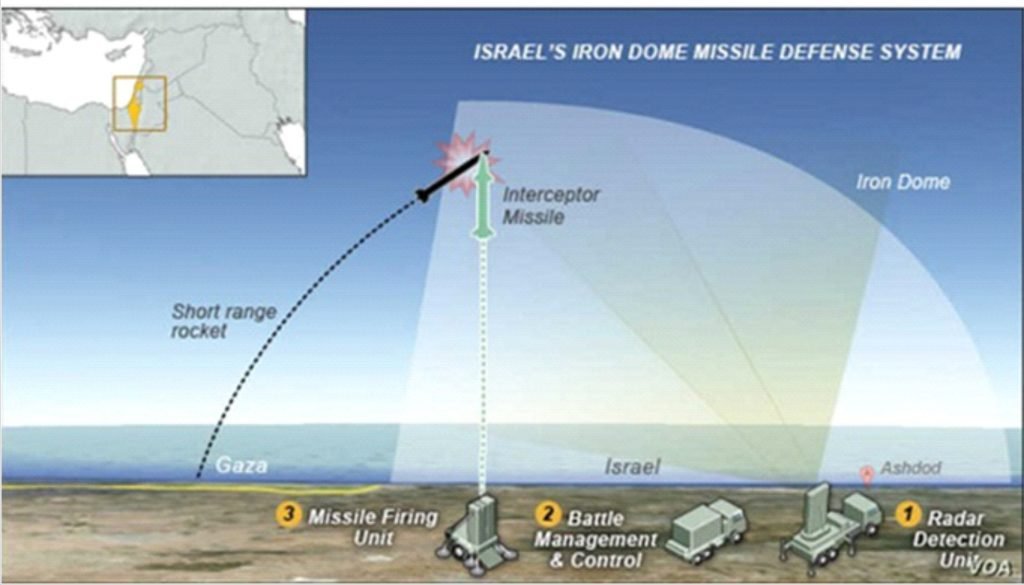Current Affairs (17th May 2021)
Killing of Elephants
Context:
- Recently, 18 elephants died on a hilltop in Assam. The preliminary post-mortem report indicates they had been struck by lightning. While the state government is waiting for the final report before ruling out other possible causes.
- According to a member of the team that conducted the post-mortem, it is possible that the elephants were killed by current flowing through the ground. That would be ‘step potential’.
- Moreover, according to the Ministry of Environment, Forest and Climate Change (MoEFCC),a total of 186 elephants were killed after being hit by trains across India between 2009-10 and 2020-21.
How does lightning kill animals?
Lightning may injure or kill animals in several ways like:
- DIRECT FLASH: An animal in an open field may be struck directly by lightning if part of its body protrudes over other objects in the vicinity. Taller animals are more vulnerable.
- SIDE FLASH: When lightning strikes a tall object such as a tree, it may generate a side flash that can strike an animal standing underneath the tree.
- TOUCH POTENTIAL: If one part of a tall animal’s body is in contact with the ground while another part, at a higher elevation, meets a lightning-struck object, a partial current may pass through its body.
- STEP POTENTIAL: The most common lightning hazard among four-legged animals. When current flows through the ground following a lightning strike, the electric potential (voltage) is highest at the point of the strike and decreases with distance along the direction of the flow. If an elephant is facing the strike point, the current will flow from the front feet (higher potential) to the hind feet (lower potential), electrocuting it in the process.
But so many elephants killed in one flash of lightning?
- It can happen because in a single lightning flash, the current flows to the ground several times. These are termed subsequent strokes.
- Therefore, we see a flash of lightning flickering. There is a possibility of each subsequent stroke attaching to different nearby objects due to a few reasons explainable in physics.
- There are two other possibilities of multiple deaths other than step potential. One of these is side flashes from the first elephant being struck to the others. That is why in lightning safety, we advise people to stay at least 2 m away from one another under thunderstorm conditions. The other possibility is multiple side flashes from a nearby tree.
Are elephants particularly vulnerable?
- Since an elephant’s front and hind feet are wide apart, it would appear to make it more vulnerable than a smaller animal, such as a rat.
- The potential difference increases with increasing distance between the two feet. The larger the potential difference, the greater the current through the body.
- Usually, an animal with a larger body mass can withstand a larger current through step potential. Thus, although an elephant could be subjected to a larger step potential, the chance that the current through its body becomes lethal is less.
- But elephants are indeed more vulnerable —because of their height. Following the death of two giraffes in a lightning strike in South Africa last year, it was height that had made the giraffes vulnerable to a direct strike. And elephants too are tall animals.
- But could the elephants have been struck by a direct flash?
Chances of getting directly struck by lightning highly depends on the vicinity. Tallest objects in the vicinity attract the lightning. So, if there are tall trees (higher than the elephants) the chance that lightning strikes them directly is not big. But if they are in an open grassfield the chances are bigger. - The Bamuni Hill in Assam, where the elephants died, has no tall trees that could have taken the brunt of the lightning strike.
- Several smaller trees were found burnt and split down in the middle, indicating that the area had indeed been struck by lightning. Some of the elephants, too, had burnt ears, charred bellies, and burn marks on the scapular region.
Multiple animal deaths such as these common:
- In 2007, five elephants were killed in a similar incident in Buxa Tiger Reserve in West Bengal.
- In 2016, over 300 reindeer were killed on Norway’s Hardangervidda plateau following thunderstorms.
- In 1972, 53 reindeer were killed in a lightning strike in Alaska.
Elephant causalities on railway tracks:
- According to the data furnished by the Project Elephant Division of the Ministry, Assam accounted for the highest number of elephant casualties on railway tracks (62), followed by West Bengal (57), and Odisha (27).
Key measures taken:
- A Permanent Coordination Committee was constituted between the Ministry of Railways (Railway Board) and the MoEFCC for preventing elephant deaths in train accidents. Among other initiatives undertaken by the Ministry are:
- Clearing of vegetation along railway tracks to enable clear view for loco pilots.
- Using signage boards at suitable points to alert loco pilots about elephant presence.
- Moderating slopes of elevated sections of railway tracks.
- Setting up underpass/overpass for safe passage of elephants.
- Regulation of train speed from sunset to sunrise in vulnerable stretches.
- Regular patrolling of vulnerable stretches of railway tracks by frontline staff of the Forest Department and wildlife watchers.
Iron Dome aerial defence system
Context:
- The Iron Dome aerial defence system intercepted a Hamas Unmanned Aerial Vehicle (UAV) that crossed from Gaza into Israel.

About:
- Iron Dome is a multi-mission system.
- It is capable of intercepting rockets, artillery, mortars and Precision Guided Munitions like very short-range air defence (V-SHORAD) systems as well as aircraft, helicopters and Unmanned Aerial Vehicles (UAV) over short ranges of up to 70 km.
- It is an all-weather system and can engage multiple targets simultaneously and be deployed over land and sea.
- The I-DOME is the mobile variant with all components on a single truck and C-DOME is the naval version for deployment on ships.
Background:
- The genesis of the Iron Dome dates to the 2006 Israeli-Lebanon war, when Hezbollah fired thousands of rockets into Israel.
- The following year, Israel announced that its state-run Rafael Advance Systems would come up with a new air defence system to protect its cities and people.
- It was developed with Israel Aerospace Industries.
- The Iron Dome was deployed in 2011.
How does it work?
- An Iron Dome battery consists of a battle management control unit, a detection and tracking radar and a firing unit of three vertical launchers, with 20 interceptor missiles each.
- The interceptor missile uses a proximity fuse to detonate the target warhead in the air.
Benefits:
- One of the system’s important advantages is its ability to identify the anticipated point of impact of the threatening rocket, to calculate whether it will fall in a built-up area or not, and to decide on this basis whether or not to engage it.
- This prevents unnecessary interception of rockets that will fall in open areas and thus not cause damage. The system has intercepted thousands of rockets so far and, according to Rafael, its success rate is over 90%.
Limitations:
- The system has limitations when it is overwhelmed with a barrage of projectiles.
- Another limitation is the system’s inability to cope with very short-range threats as estimates put the Iron Dome’s minimum interception range at 5-7 km.
- Also, the cost of interception is high.
BRICS EWG Meeting
Context:
Recently, India has chaired the First BRICS Employment Working Group (EWG) Meeting, held virtually.
- Participants: Representatives of member nations (Brazil, Russia, India, China, and South Africa), the representatives of International Labour Organization (ILO) and International Social Security Agency (ISSA).
About Meeting:
- Gig and Platform Workers’ Role in Labour Market
- Members discussed how the proliferation of Digital Labour Platforms is transforming the labour processes in the world of work.
- They also discussed challenges faced by them and various measures being taken by member nations including extension of social protection systems.
- Formalization of Labour Markets
- Members discussed various initiatives taken by them towards formalization of jobs.
- They also discussed how COVID-19 has enhanced informalization risk.
- Promoting Social Security Agreements (SSA)
- SSA is a bilateral agreement between India and a foreign country designed to protect the interests of cross border workers.
- The agreement provides for avoidance of ‘double coverage’ and ensures equality of treatment to workers of both countries from a social security perspective.
- As on date, India has signed SSAs with 18 countries.
- SSA would help the international workers to port their benefit to their home countries thereby preventing loss of their hard-earned money.
- They will be exempted from contributing both in home as well as host countries.
-
- Members resolved to enter dialogue and discussion with each other and take it forward towards signing of the agreements.
- They also converged on devising a multilateral framework for the same.
- ISSA and ILO expressed willingness to provide technical support in facilitating conclusion of such agreements.
- Participation of Women in Labour Force
- Members resolved to promote participation of women in remunerative, productive, and decent work.
- There was a consensus on extending social security cover to the women workers engaged in the informal sector.
- Impact of Covid-19 on participation of women in the labour force was also discussed.
India’s Low Spending on Health:
- According to the Department of Economic Affairs (DEA), India’s public expenditure on health is the lowest among the BRICS nations.
- It also noted that the Covid-19 pandemic has caused a setback in the journey of SDGs.
- Also, there is a wide variation in the public expenditure that happens on health as well as on education.


